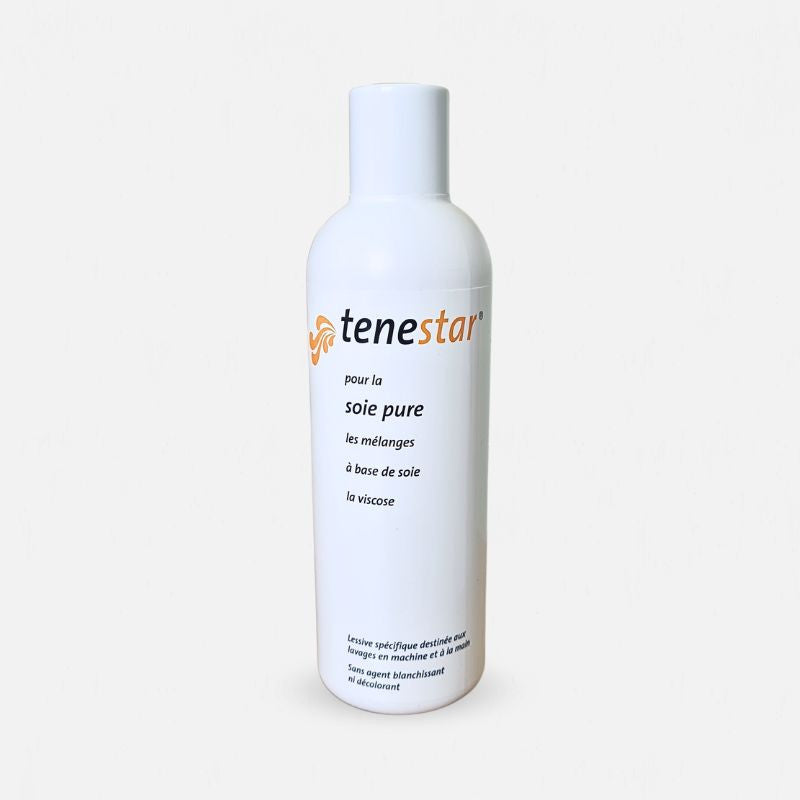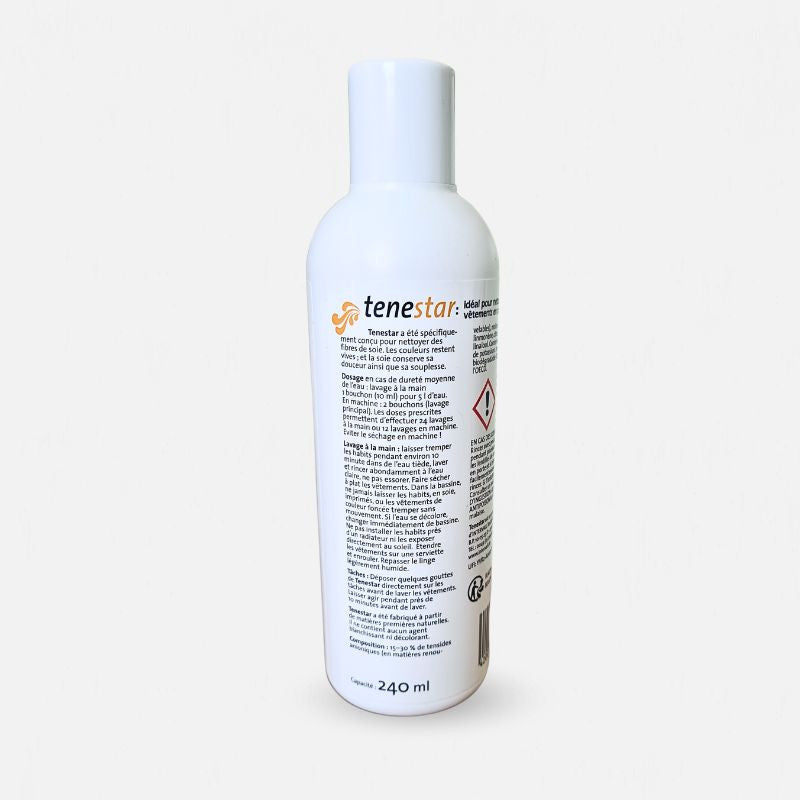There are many prejudices about silk. What if we were to wring their necks?!
Montesquieu asserted: "Skepticism is the first step towards truth"! So it's urgent to take a step back (if not a long one) from a number of prejudices that are as fanciful as they are widespread!
Among the far-fetched "urban tales and legends" from which we don't really know where they originate, those circulating on the web have a hard life!
Discovered 3000 years before our era, silk has always been considered a raw material as refined as it is luxurious, long reserved for an elite. Now democratized, it is used in the textile industry for its many thermal and antibacterial qualities, as well as for its incomparable sheen and feel. So it's hardly surprising that silk is now also found in our homes, and particularly in our bedrooms.
Used in the manufacture of quality comforters, pillows and bed linen, silk cajoles, fascinates and gets people talking! So many misconceptions abound! Here are a few surprising and unfounded myths, our top 6 silk prejudices:
1 - Silk is cold!
FALSE!
On the contrary! Cool in summer and warm in winter, silk is a natural raw material that absorbs moisture and helps thermoregulate the sleeping environment. This property also prevents the development of bacteria and dust mites, and enables the fiber to better regulate temperature.
So a silk sheet, comforter cover or pillowcase will stay cool in summer, and feel cozy as soon as the first chill
2 - Silk must be hand-washed!
FALSE!
This is one of the most common prejudices about silk. Another common misconception, but one that's as false as it is widespread!
Silk is a naturally healthy, antibacterial and hypoallergenic material. For comforters, pillows and throws, washing with water is unnecessary and risks damaging the silk and depriving it of its natural properties.
From What's more, the proliferation of odor-causing bacteria is limited by silk's naturally antibacterial qualities. So there's less to worry about!
Care of silk bed linen
All our silk sheets and comforter covers can therefore be washed in the washing machine!
We recommend a delicate cycle at 30°C and the use of a silk-specific detergent such as Tenestar. Placing items in a laundry bag will also help protect your items inside the machine.
altering the quality and lustre of your silk sheets, regular washings will make them increasingly soft and silky
.Caring for silk comforters
Our comforters are easy to care for. Here are a few tips to help you make the most of your bedding and preserve its qualities over the long term:
- Air your silk comforter two or three times a year, avoiding direct exposure to sunlight. This allows the silk to regenerate and regain its volume.
- Protect your comforter with a comforter cover to avoid staining.
In the event of a stain, be sure to clean only the cotton cover, avoiding wetting the silk filling. To avoid any risk of silk deterioration, we recommend using a special silk detergent such as Tenestar.
Out of season, store your comforter in a cool, dry place away from direct sunlight. The duvet cover provided is ideal for protecting your comforter from dust, while allowing good ventilation.
As a last resort, we recommend that you contact a professional who is familiar with silk and has a silk-specific detergent. Washing in running water is totally inadvisable, as silk fibers become waterlogged and lose their natural properties after drying. Remember to indicate the value of the silk comforter at the depot.
3 - Silk is very expensive!
This is one of the first things that comes to mind when you think of silk, but it's FALSE!
Quality silk is expensive to produce. Judge for yourself: on average, between 3,000 and 5,000 silk cocoons are needed to produce 1 kg of silk!
At Maison de la Soie, our aim is to strike a balance between the quality you expect from our products and the fair price you pay for them. Compare and you'll see!
To enable us to sell silk bedding and linen at some of the lowest prices on the market, we have chosen to sell directly on our eshop, without any intermediaries.
In addition, far from being more expensive than cotton or linen sheets, our silk sheets promise you high-quality bedding with proven longevity.
Careful maintenance will ensure that your sheets last for many years, turning your initial outlay into a long-term investment, especially for your health and comfort.
And if you're going to spend a third of your life sleeping, you might as well do it without any compromises or renunciations, don't you think?
We have, however, thought of the smallest budgets by developing a silk and cotton range:
4 - Silk is slippery!
FALSE!
While it's true that silk sheets are less rough than cotton or linen sheets, don't confuse their soft feel with the dry, cold, "leaky" touch of cheap sheets made from synthetic fibers.
It's polyester and sheets made from polyester satin that slip, not silk!
Satin ("charmeuse" in English) is a soft, shiny fabric that can be made from any yarn. Generally, the word "satin" is used for polyester satin, but you can also find cotton satin, viscose satin, etc... There is obviously no comparison with natural silk, either visually or in terms of feel.
Beware of unscrupulous merchants selling polyester satin for silk satin.
Much cheaper to produce, polyester satin is invading the bed linen shelves of distributors in search of easy sales and who deliberately maintain the confusion.
You might as well compare a chipboard panel to a solid oak plank!
5 - Silk is fragile!
FALSE!
Did you know that before the advent of nylon, parachutes were woven from silk?
Silk's strength-to-weight ratio makes it one of the strongest, tear-proof and most wear-resistant fabrics available.
Here again, the collective intellect has done its work, and there are plenty of quick amalgams!
Let's not confuse the finesse of silk lingerie with the strength of a sheet woven from the same material.
It's all a question of quality!
In addition to the chemical fibers that try to imitate it, there are different kinds of silk, not all of the same quality. It all depends on the animal that makes the cocoon. The best known, and the one that makes the best quality silk, is the caterpillar of the mulberry bombyx butterfly, more commonly known as the silkworm. The caterpillars of other insects (butterflies, spiders...) also make silk thread cocoons.
Several types of silk are available on the market:
- Habotai silk, produced by worms that multiply in captivity, has a matt, slightly sandy appearance. This silk is therefore less silky and lustrous.
- Tussah silk is produced by wild silkworms and is generally considered to be of inferior quality. The short, broken silk fibers promote the presence of knots and impurities in the weave, greatly altering its look and feel.
- Grade A silk is the highest quality available. This quality of silk requires a selection of the finest cocoons, which unwind into a long, regular thread. For silk bed linen, this means fewer thread ends. Silk satin is all the more luxurious, soft and resistant. Our sheets are made exclusively from this high-quality silk.
The grammage of your sheets is also important:
Momme is a unit used to measure the density of a silk fabric. For bed linen, this can vary between 19 and 25.
This is the most important criterion for choosing silk bed linen, because the thicker the silk satin, the more resistant, softer and visually luxurious it is.
We offer only the best qualities of silk: 19, 22 and 25 Mommes. If a manufacturer doesn't tell you the weight in mommes of their silk sheets, look elsewhere!
Finally, the making of the sheet brings the final touch to the sought-after comfort:
The price of silk rolls varies greatly with width. It's therefore economical to sew two strips of fabric lengthwise to make one large sheet. However, it is unpleasant and unsightly to have a seam in the middle of your sheets. We only offer sheets without patch seams.
6 - Silk products are chemically treated!
FALSE!
Silk is a natural fiber produced by silkworms, which feed exclusively on mulberry leaves.
Our suppliers are certified Oeko-tex® standard 100, which ensures the absence of undesirable chemical substances. Apart from ivory, the natural color of silk, dyes are used to dye the fabric. However, these dyes are compatible with the Oeko-tex® standard 100.
And what if, having swept away all those preconceptions about silk, we also told you that your pillowcase is a genuine natural beauty treatment? So, are you convinced?
All that's left is for you to make up your own mind and judge on the facts...
You'll be able to add to the list of beliefs about silk, based this time on actual use of the product, which you'll see reserves more pleasant surprises than disappointments!
Please don't hesitate to contact us to find out more about the products in our catalog
Treat yourself to the ultimate in silk comfort
Discover our selection of silk bedding and linens. From sheets to comforters, enjoy the natural benefits of silk for a healthy, restful night's sleep.
Discover the collection





Leave a comment